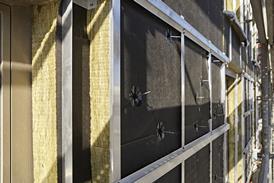In April this year, the Health and Safety Commission published its proposals for amendments to the Construction (Design and Management) Regulations. The consultation process was completed on 31 May and it is expected that the changes will come into effect later this year.
The main amendments were drafted in response to the Court of Appeal’s judgment in the case of R vs Paul Wurth SA which concerned regulation 13(2)(a) of the CDM rules.1 Regulation 13 contains the duties placed on designers and 13(2)(a) deals with the duty of a designer to ensure that his design has adequate regard to health and safety.
In the Paul Wurth case, that company was to install a conveyor for a steelworks. It employed another company to convert its design into manufacturing and construction drawings. The second company in turn subcontracted the manufacture to a third, which prepared a drawing for a relevant part of the machinery. This had no locking or securing pin. Paul Wurth was given the drawing to approve but failed to comment on this omission, which caused a fatal accident. On appeal, Paul Wurth submitted that it did not prepare the design of the latching devices.
The Court of Appeal held that regulation 13(2)(a) applied only to a designer that prepared the design, and that Paul Wurth had not prepared the design of the latching devices.
The judgment also made it clear that regulation 13(2)(a) does not apply to a designer as defined in the second part of the definition of designer, which is: any person “who arranges for any person under his control (including, where he is an employer, any employee of his) to prepare a design”. The effect of this is that a designer would not be in breach of regulation 13(2)(a) if an employee prepared the design.
It is this aspect of the judgment that the HSC consultative document addressed. In the commission’s view, the overwhelming majority of designs are prepared either by employees or by individuals under the control of another. “Very few designs are prepared by the person or persons who actually run or own the design practice.”
The HSC says that the proposed amendments will not place duties on employees personally doing design work, nor on persons, including designers, in respect of any design work they subcontract to another practice. The question is whether the HSC has achieved this objective, or whether designers could now be prosecuted if they subcontract their design.
The proposed amendments shorten the definition of a designer to “any person who carries on a trade, business or other undertaking in connection with which he prepares a design”, and add a paragraph to the definition section, so that any reference to a person preparing a design “shall include a reference to his employee or other person at work under his control”.
- R vs Wurth held that designers were not liable for their employees' mistakes
- New rules, to come into force this year, extend liability
- Contract terms will be important in deciding how far
Thus “a designer” will now include the direct employees of the firm carrying out the design and other people working for the firm such as seconded employees, agency workers and a self-employed single sub-consultant if they are under the firm’s control.
In order to establish whether these types of employees are “under his control” it will be necessary to look at the contractual arrangements between them and the firm, but generally, control and direction of these employees passes to the firm while they are working for it. A consultant could therefore be liable for prosecution in the future should any of these types of employees fail to comply with regulation 13(2)(a).
Consultants may well have assumed that they would be liable anyway for the designs prepared by such people, but there would be no harm in checking the arrangements to ensure that the question of who has direction and control is clear. In some cases there may be good reasons for direction and control not to pass to the designer (as employer) – for example, where a self-employed sub-consultant is a specialist in a particular area and the consultant is not.
More problematic is whether “a person at work under his control preparing a design for him” would extend to the subcontracting of design to sub-consultant firms. A “person” includes companies. Again, the contractual arrangements will be relevant. A direct subcontract of a specific part of the design should be enough to ensure that the responsibility for complying with regulation 13(2)(a) is placed on the sub-consultant, provided the extent of the design that is to be prepared by the sub-consultant is sufficiently clear and identified.
If, however, the original consultant has any responsibility in relation to checking or approving a sub-consultant’s design or any element of it, especially if this includes power to instruct changes, there must be a possibility that this could constitute sufficient control to open the way to a prosecution. (The consultant would not be able to rely on the HSC statement about the extent of the amended duty.)
It will also be important to ensure that the extent of the design that each designer is preparing is clear, especially where different elements can be split between consultants, sub-consultants and specialist subcontractors. Detailed descriptions in the various contracts will help determine this.
1. Court of Appeal (Criminal Division) 26 January 2000.
Postscript
Rachel Barnes is a partner in solicitor Beale and Company.






















